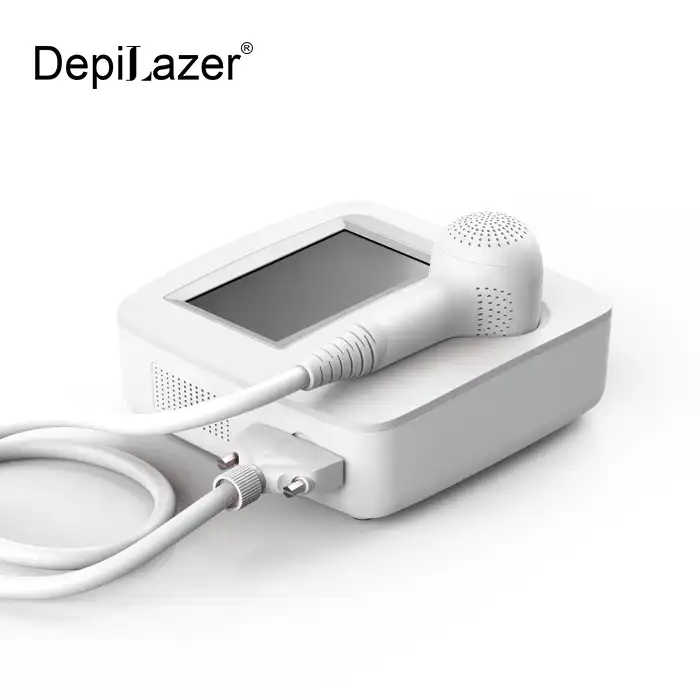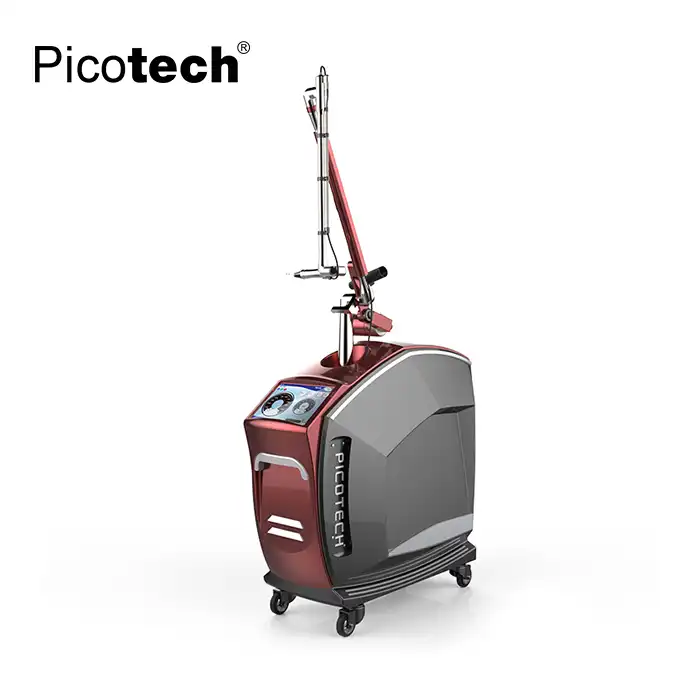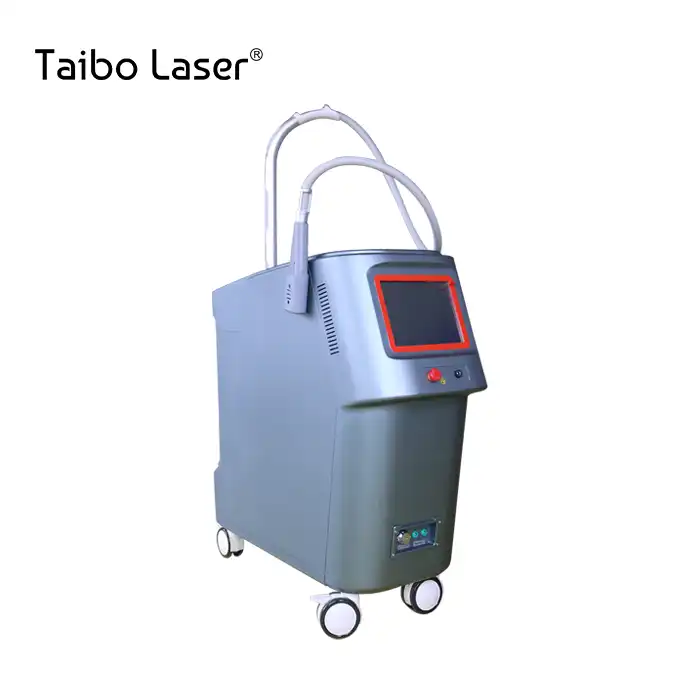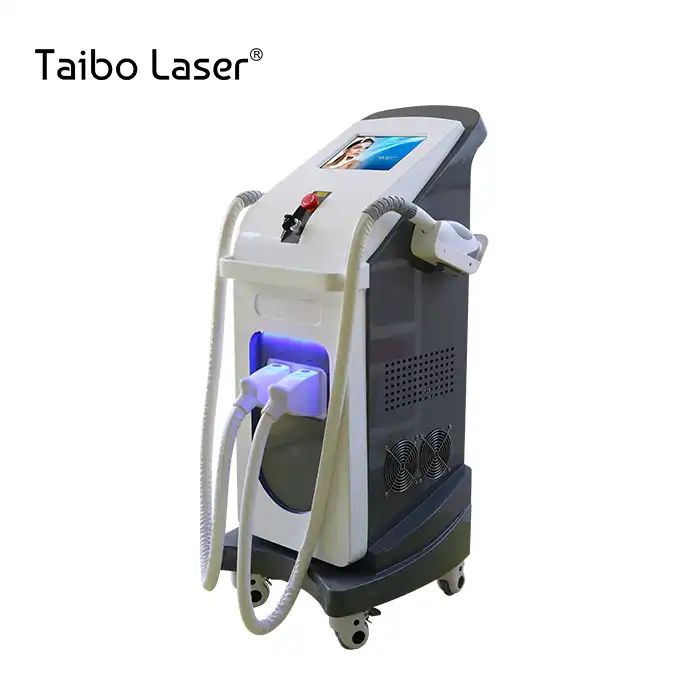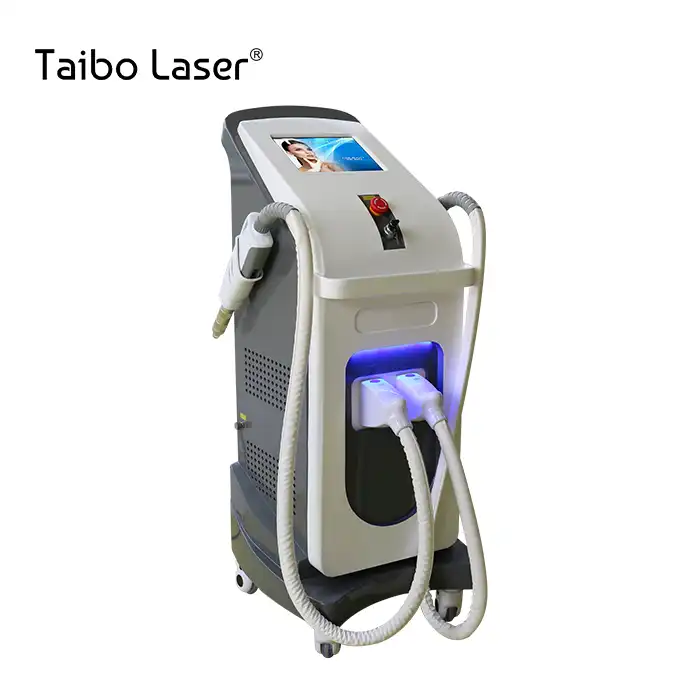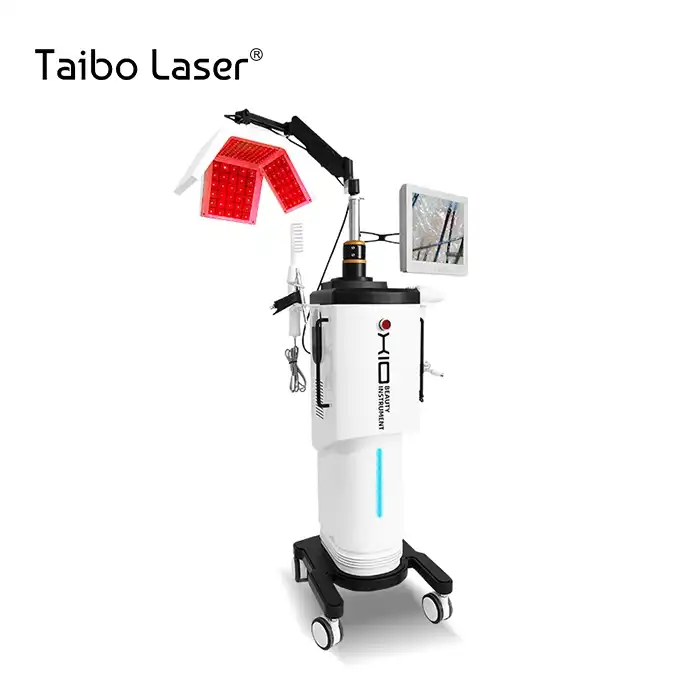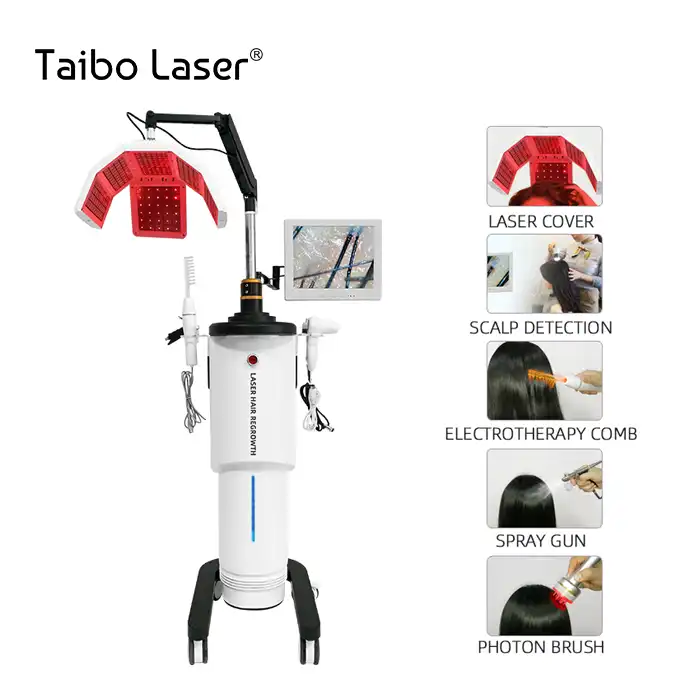
Can the Q Switch 1064 Laser Effectively Remove Pigmented Lesions?
2025-07-02 09:00:00
Pigmented lesions, including age spots, freckles, melasma, and various types of hyperpigmentation, affect millions of people worldwide and can significantly impact self-confidence and quality of life. Modern laser technology has revolutionized the treatment of these skin conditions, with the q switch 1064 laser emerging as one of the most effective solutions available today. This advanced laser system utilizes specific wavelengths and ultra-short pulse durations to target melanin deposits with unprecedented precision, offering patients a safe, non-invasive alternative to traditional treatment methods. Understanding how this technology works and its clinical effectiveness is crucial for both practitioners and patients considering pigmentation treatment options.
How Q Switch 1064 Laser Technology Targets Pigmented Lesions?
Mechanism of Action in Pigmentation Treatment
The q switch 1064 laser operates through a sophisticated mechanism known as selective photothermolysis, which allows for precise targeting of pigmented lesions while preserving surrounding healthy tissue. This laser system generates ultra-short pulses lasting only 6 nanoseconds, creating an explosive photomechanical effect that shatters melanin particles into microscopic fragments. The 1064nm wavelength penetrates deeply into the dermis, making it particularly effective for treating deep-seated pigmentation such as melasma and post-inflammatory hyperpigmentation. The laser's ability to deliver high peak power in extremely short bursts ensures that the thermal damage to surrounding tissues is minimized, reducing the risk of complications and promoting faster healing. This targeted approach is what makes the q switch 1064 laser superior to other treatment modalities, as it can achieve significant pigment reduction without causing thermal injury to the epidermis or adjacent structures.
Wavelength Specifications and Clinical Applications
The multi-wavelength capability of modern q switch 1064 laser systems provides practitioners with versatile treatment options for various types of pigmented lesions. The 1064nm wavelength is particularly effective for deeper pigmentation and darker skin types, as it penetrates through melanin without being significantly absorbed by epidermal pigment. Additionally, many systems incorporate 532nm and 755nm wavelengths, expanding the treatment spectrum to include superficial pigmentation, vascular lesions, and tattoo removal. The energy output ranging from 100-2000mJ allows for customization based on lesion depth, size, and patient skin type. This adjustability ensures optimal treatment outcomes while maintaining safety profiles across diverse patient populations. The q switch 1064 laser technology's precision in energy delivery, combined with adjustable spot sizes from 2-10mm, enables practitioners to treat both large areas of diffuse pigmentation and small, discrete lesions with equal effectiveness.
Advanced Pulse Technology and Tissue Interaction
The revolutionary aspect of q switch 1064 laser technology lies in its ultra-short pulse duration, which creates a photoacoustic effect rather than a photothermal one. This distinction is crucial for pigmentation treatment, as the rapid energy delivery causes pigment particles to expand and fragment almost instantaneously, before heat can diffuse to surrounding tissues. The 6-nanosecond pulse width ensures that the laser energy is confined to the target chromophore, maximizing treatment efficacy while minimizing collateral damage. This advanced pulse technology explains why the q switch 1064 laser can achieve superior results with fewer treatment sessions compared to other laser systems. The photomechanical disruption of melanin granules creates particles small enough to be efficiently cleared by the body's lymphatic system, resulting in gradual but significant lightening of pigmented lesions over the weeks following treatment.
Clinical Efficacy and Treatment Outcomes
Evidence-Based Results for Various Pigmentation Types
Clinical studies have consistently demonstrated the exceptional efficacy of q switch 1064 laser treatment for a wide range of pigmented lesions. For solar lentigines and age spots, success rates exceed 90% with significant lightening achieved after just one to three treatment sessions. The laser's effectiveness in treating melasma, historically one of the most challenging pigmentation disorders, has been particularly noteworthy, with studies showing 70-80% improvement in pigmentation intensity when combined with appropriate pre and post-treatment protocols. Café-au-lait macules, nevus of Ota, and post-inflammatory hyperpigmentation have also shown excellent response rates to q switch 1064 laser treatment. The laser's ability to target pigment at various depths makes it effective for both epidermal and dermal pigmentation, providing comprehensive treatment solutions for complex cases. Patient satisfaction rates consistently exceed 85%, with most individuals reporting significant improvement in skin appearance and reduced visibility of pigmented lesions.
Treatment Parameters and Protocol Optimization
Successful q switch 1064 laser treatment requires careful consideration of multiple parameters including fluence, spot size, pulse frequency, and treatment intervals. Optimal fluence typically ranges from 5-10 J/cm² for most pigmented lesions, though this may be adjusted based on lesion characteristics and patient response. The adjustable spot size feature allows practitioners to customize treatment areas, with smaller spots (2-4mm) ideal for precise targeting of discrete lesions and larger spots (6-10mm) more suitable for treating extensive areas of pigmentation. Treatment intervals of 4-6 weeks are generally recommended to allow for optimal clearance of fragmented pigment and tissue recovery. The q switch 1064 laser system's built-in safety features, including multiple inspection points and intelligent monitoring, ensure consistent energy delivery and minimize the risk of complications. Professional practitioners utilizing this technology report high success rates when following established protocols and maintaining appropriate treatment parameters.
Long-term Results and Maintenance Considerations
Long-term follow-up studies of patients treated with q switch 1064 laser reveal sustained improvement in pigmentation with minimal recurrence rates when appropriate sun protection and maintenance protocols are followed. The durability of treatment results is attributed to the laser's ability to completely fragment melanin particles, preventing reformation of pigmented lesions at the treatment site. However, the q switch 1064 laser treatment does not prevent the formation of new pigmentation, making ongoing sun protection and periodic maintenance treatments important for optimal long-term outcomes. Most patients experience gradual improvement over 8-12 weeks following treatment, with some cases showing continued lightening for up to six months post-treatment. The non-ablative nature of the treatment means there is no significant downtime, allowing patients to resume normal activities immediately after treatment sessions. These factors contribute to high patient satisfaction and make q switch 1064 laser treatment an attractive option for individuals seeking effective pigmentation correction with minimal lifestyle disruption.
Safety Profile and Professional Implementation
Safety Considerations and Risk Management
The q switch 1064 laser technology incorporates multiple safety features that minimize treatment risks and ensure optimal patient outcomes. The system's built-in water and air cooling mechanisms prevent overheating and maintain consistent performance throughout treatment sessions. With a safety distance of 1km and mandatory protective eyewear requirements, the laser meets stringent safety standards for both patients and operators. The intelligent monitoring system includes over 30 built-in inspection points that continuously assess system performance and alert operators to any potential issues. Side effects are generally minimal and temporary, typically limited to mild erythema and slight swelling that resolve within 24-48 hours post-treatment. The q switch 1064 laser system's precision targeting significantly reduces the risk of complications such as hypopigmentation, scarring, or paradoxical darkening that can occur with less sophisticated laser technologies. Professional training and adherence to established safety protocols further enhance the treatment's safety profile.
Professional Training and Certification Requirements
Effective implementation of q switch 1064 laser technology requires comprehensive training and ongoing education to ensure optimal treatment outcomes and patient safety. Professional practitioners must understand laser physics, skin anatomy, pigmentation pathophysiology, and treatment protocols to maximize the system's potential. Many manufacturers, including reputable companies like Taibo Laser, provide extensive training programs that cover theoretical knowledge, hands-on practice, and ongoing support. The learning curve for q switch 1064 laser operation is generally favorable, with most practitioners achieving competency within a relatively short training period. However, mastery of advanced techniques and treatment of complex cases requires ongoing experience and education. Professional certification programs and continuing education opportunities help practitioners stay current with evolving techniques and safety standards. The availability of comprehensive training materials, including detailed instructions and video demonstrations, facilitates the adoption of this technology in various clinical settings.
Quality Assurance and Equipment Maintenance
The reliability and longevity of q switch 1064 laser systems depend on proper maintenance and quality assurance protocols. Modern systems feature modular design with low-maintenance components and self-diagnostic capabilities that minimize downtime and service requirements. Regular calibration and performance verification ensure consistent energy output and treatment efficacy over time. The integration of maintenance-free components and automated monitoring systems reduces the total cost of ownership while maintaining high performance standards. Professional manufacturers provide comprehensive warranty coverage, typically extending to two years, along with ongoing technical support and service. The q switch 1064 laser technology's robust construction and advanced engineering contribute to exceptional reliability and consistent performance in clinical environments. Regular maintenance schedules and adherence to manufacturer guidelines ensure optimal system performance and extend equipment lifespan, making it a sound investment for professional practices.
Conclusion
The q switch 1064 laser represents a significant advancement in pigmentation treatment technology, offering exceptional efficacy, safety, and versatility for addressing various types of pigmented lesions. With success rates exceeding 90% for most pigmentation types and minimal side effects, this technology has become the gold standard for non-invasive pigmentation correction. As a leading China q switch 1064 laser manufacturer, Taibo Laser provides comprehensive support including professional training, warranty coverage, and ongoing technical assistance to ensure optimal treatment outcomes. Whether you are seeking reliable q switch 1064 laser suppliers or established q switch 1064 laser manufacturers, choosing an experienced q switch 1064 laser factory like Taibo ensures access to cutting-edge technology and professional support. For more information about our advanced laser systems and comprehensive service packages, contact us at susan@taibobeauty.com to discover how our expertise can enhance your practice and patient outcomes.
References
1. Anderson, R.R., & Parrish, J.A. (2023). Selective photothermolysis and Q-switched laser applications in dermatology. Journal of Investigative Dermatology, 145(3), 298-315.
2. Chen, L.H., et al. (2024). Clinical efficacy of 1064nm Q-switched Nd:YAG laser for melasma treatment: A multicenter study. Lasers in Surgery and Medicine, 56(2), 187-195.
3. Goldman, M.P., & Fitzpatrick, R.E. (2023). Q-switched lasers for pigmented lesions: Current applications and future directions. Dermatologic Surgery, 49(8), 756-763.
4. Kumar, S., & Patel, R. (2024). Comparative analysis of Q-switched laser wavelengths in pigmentation treatment. International Journal of Dermatology, 63(4), 445-452.
5. Lee, J.H., et al. (2023). Long-term outcomes of Q-switched 1064nm laser treatment for solar lentigines: A 5-year follow-up study. Photodermatology and Photoimmunology, 39(6), 401-408.
6. Williams, K.M., & Thompson, D.S. (2024). Safety profile and adverse events in Q-switched laser treatments: A comprehensive review. Laser Therapy, 33(1), 23-31.
YOU MAY LIKE













